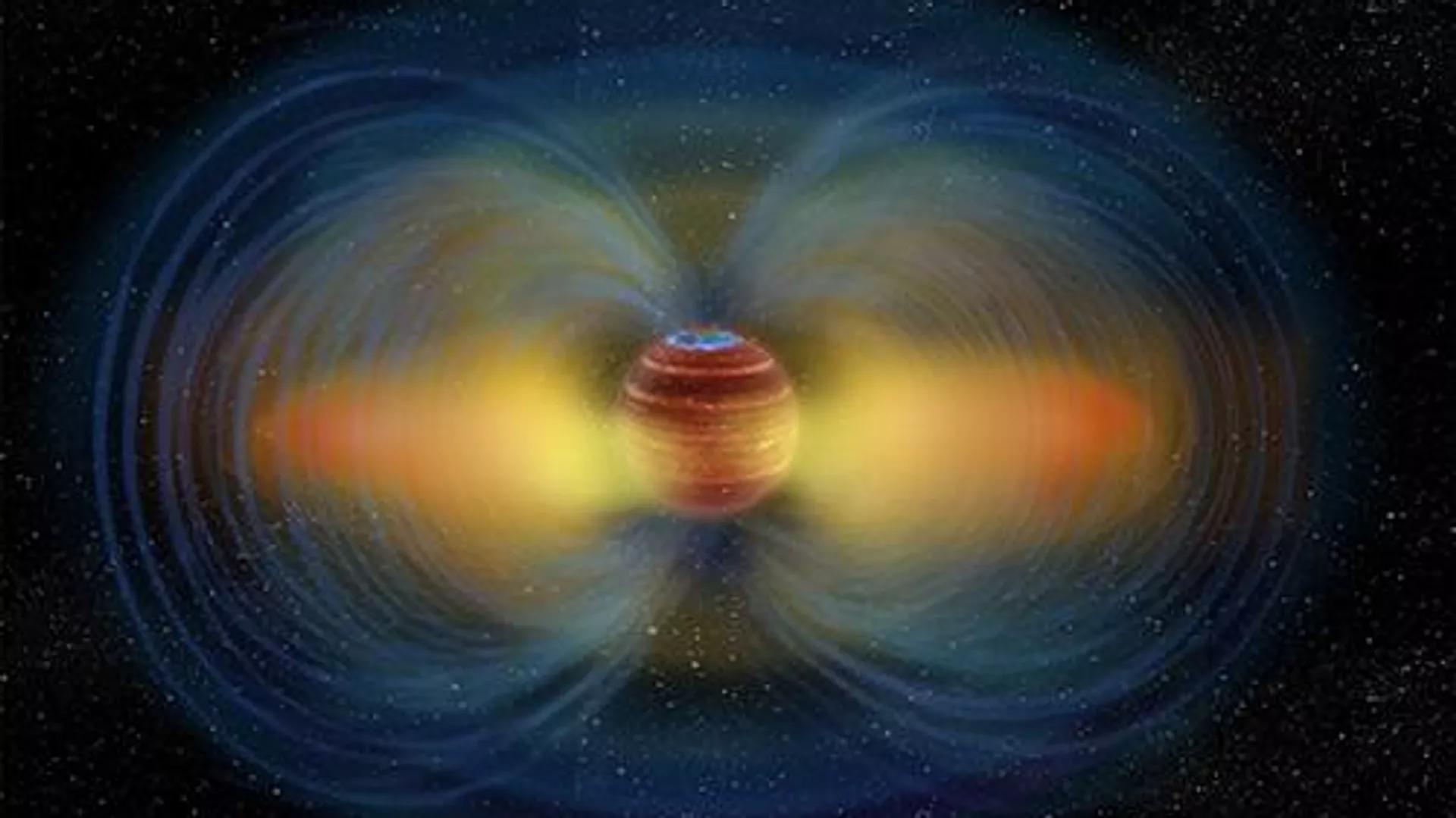Africa-Press – Lesotho. The global magnetic field can trap cosmic particles and accumulate them around a planet, thus adding to the chances of life emerging on the planet. One such field was found on a distant brown dwarf – and an extremely powerful one at that.
Astronomers have detected the first radiation belt observed around a planet sitting outside the solar system, new findings revealed. The team used an array of 39 radio telescopes coordinated by the US-based National Radio Astronomy Observatory and the Effelsberg radio telescope operated by the Max Planck Institute for Radio Astronomy in Germany.
Radio images from the ultracold dwarf LSR J1835+3259, which sits some 18.5 light-years away from the sun, revealed a cloud of high-energy electrons trapped in the celestial body’s powerful magnetic field.
Scientists viewed the dwarf planet in the radio spectrum and detected a radiation belt emitting about 10 million times more powerfully than those spotted near the giant Jupiter.
Officials indicated It stretches out to a distance of up to 18 radii from LSR J1835+3259. This is where the particles that fall towards the dwarf’s poles and create bright lights.
To generate a magnetic field, a planet’s interior must be hot enough to have conductive fluids, which in the case of Earth is the molten iron in its core. On Jupiter, the conductive liquid is hydrogen, which is under so much pressure that it becomes metallic.
Metallic hydrogen likely also produces magnetic fields in brown dwarfs, Kao noted, while in the interior of stars the conductive liquid is ionised hydrogen.
The strength and shape of the magnetic field is an important factor in determining a planet’s habitability. A radiation belt is a region of planets’ magnetospheres where high-energy charged particles that have entered the magnetosphere accumulate and are trapped.
Strong magnetic fields form a ‘magnetic bubble’ around the planet – the magnetosphere. This traps and accelerates the particles to nearly the speed of light.
All planets in the solar system with magnetic fields, including the Earth and Jupiter, have radiation belts made up of these high-energy charged particles trapped by the planet’s magnetic field. The Earth’s radiation belts is known as the Van Allen belts. The results of the observations were published in the journal Nature.
For More News And Analysis About Lesotho Follow Africa-Press






